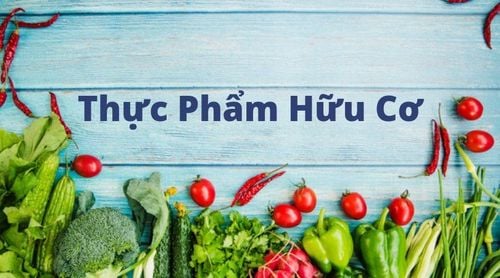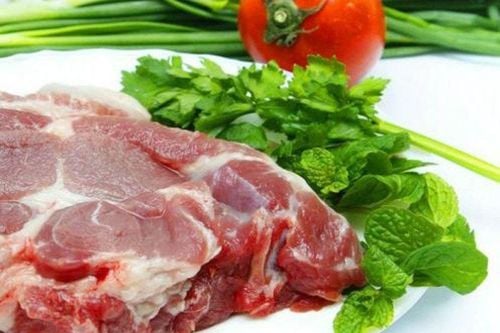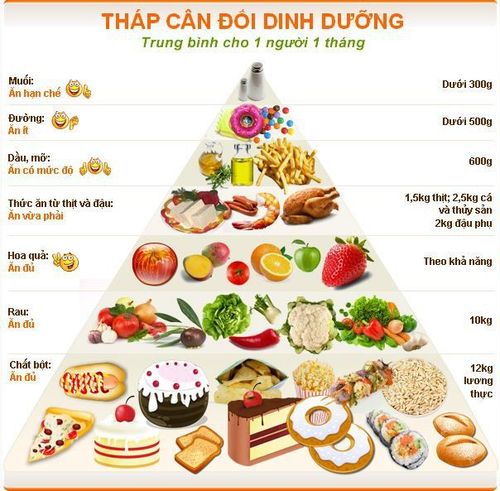This is an automatically translated article.
Most conventionally grown fruits and vegetables will contain traces of pesticides left over from spraying during cultivation, even after you've washed and peeled them. Long-term exposure to pesticides can lead to a number of potential health risks, including cancer, heart disease or fertility-related problems.
1. Avocado is a low pesticide food
Avocado is a fatty and very healthy fruit. It ranks first in the list of foods that are least contaminated with pesticides. The United States Department of Agriculture (USDA) conducted a test on 360 avocados, the results showed that less than 1% of avocados had residual pesticides, and of these fruits there was only one pesticide. Pests found.
On the other hand, avocados often have quite thick skins, which carry pesticides that stay in the skins that are removed during processing before consumption.

Bơ không chỉ chứa nhiều chất dinh dưỡng mà còn ít bị nhiễm thuốc trừ sâu
2. Sweet corn contains less pesticides
Among the sweet corn sampled, including cob and frozen sweet corn, less than 2% of sweet corn cases were found to have traces of previously sprayed pesticides. However, residues of glyphosate (Roundup) are not included in these comparisons, another pesticide to which some types of corn have been genetically engineered to resist. According to research, at least 8% of sweet corn and most starchy corn used in food processing are grown from genetically modified (GM) seeds.
If you do not want to use glyphosate and genetically modified foods, you can choose other organic corn products that are not sprayed with glyphosate or have not undergone GMO.
3. Pineapple contains less pesticides
In a test on 360 pineapples, up to 90% were free of residual pesticides. Part of the reason is that pineapple has a rather thick skin, which acts as a natural protective barrier. However, according to the Environmental Working Group (EWG), it is worth noting that pesticides sprayed at pineapple plantations have the risk of contaminating water sources, killing aquatic organisms. and pose a number of potential health risks to farmers. Therefore, experts often recommend that people use organic pineapples, including fresh, canned and frozen pineapples to ensure health safety, and encourage environmentally friendly pineapple farming methods. more school.
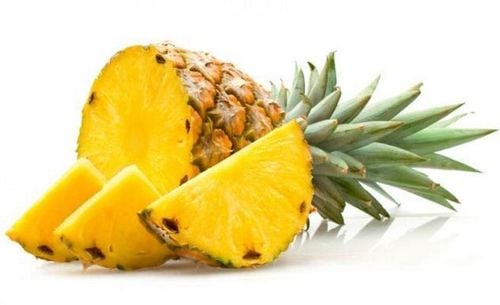
Đa số dứa không chứa lượng thuốc trừ sâu còn sót lại
4. Cabbage is a low pesticide food
Cabbage is also one of the foods that contain less pesticides. According to some recent studies, about 86% of the cabbages tested did not contain residual pesticides, and of those, only 0.3% of the cases were found to be more than one type. pesticides.
In fact, cabbage has the ability to produce a compound called glucosinolates that effectively prevents insects that damage vegetables, so the need for pesticide spraying of cabbage is often less than that of vegetables. other. In addition, plant compounds found in cabbage also contribute to a significant reduction in the risk of cancer.
Besides, cabbage is also a rich source of vitamin C and vitamin K. It is estimated that one cup (89 grams) of chopped raw cabbage leaves contains 54% vitamin C and 85% vitamin K respectively of the daily intake (RDI).
5. Onions
Less than 10% of onion samples after removing the outer skin were found to have pesticide residue. However, you can absolutely choose organic onions because they contain 20% higher levels of flavonoids (a compound that is effective in protecting heart health) than onions. Western crops are grown according to conventional farming methods.
This stems from the promotion of onion cultivation towards the development of natural protective compounds, which include flavonoids- a substance that works against insects harmful to plants and some other harmful organisms.
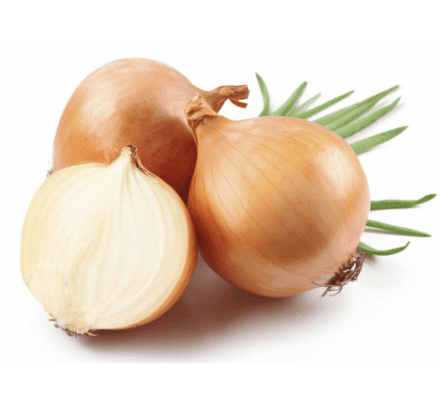
Hành tây đem lại nhiều lợi ích cho sức khỏe tim mạch
6. Frozen sweet beans
Approximately 80% of the sweet peas tested did not contain residual pesticides. In the United States, peas ranked 20th in the ranking of clean vegetables, but imported peas ranked 14th among vegetables with high levels of pesticides.
Peas are usually eaten with the pods, so the whole pods are checked for analysis. The peel is inherently in direct contact with pesticides, so it is more susceptible to contamination. However, that does not negate the nutritional value provided by sweet peas, as they are a very rich source of fiber, along with essential vitamins such as A, C and K.
7. Papaya
In an experiment based only on analysis of the flesh of papaya (excluding the skin and seeds) it was found that about 80% of papaya contains no residual pesticides. Because the skin of the papaya has shielded the flesh from being contaminated with pesticides.
Most varieties of Hawaiian papaya are genetically engineered to block certain viruses that can damage plants. Instead of using genetically modified papaya, you can opt for organic papaya.
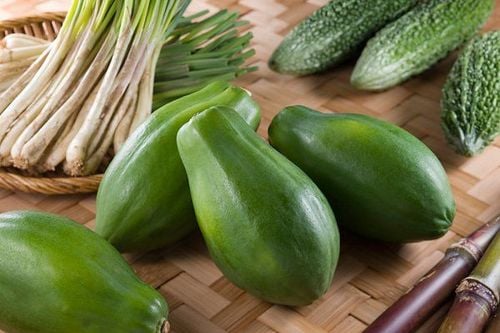
Đu đủ không bị nhiễm thuốc trừ sâu nhờ vào vỏ của chúng che chắn
Papaya is really a great source of vitamin C. One cup (140 grams) of papaya contains 144% of the RDI. In addition, this is also a food that is very rich in fiber, folate and vitamin A.
8. Asparagus
Of the asparagus tested, 90% were pesticide-free. Asparagus usually contains an enzyme that destroys malathion, an insecticide used to kill beetles that attack plants. This has greatly reduced the amount of pesticides that are sprayed on asparagus before harvest.
In addition, asparagus is considered a green vegetable that provides an abundance of essential nutrients for the body, such as folate, fiber, vitamins A, C and K.
9. Mango
Out of a total of 372 mango samples tested, about 78% did not contain residual pesticides. This tropical fruit will be analyzed with the peel after it has been washed and drained. Mangoes are often contaminated with an insecticide called thiabendazole - an agricultural chemical that is toxic when used at high levels, but the amount of this chemical left on mango is low and in the allowed by the US Environmental Protection Agency (EPA).

Thuốc trừ sâu trong xoài ở mức độ thấp và nằm trong giới hạn cho phép
It is estimated that one cup equivalent to 165 grams of mango contains up to 76% of the RDI for vitamin C and about 25% of the RDI for vitamin A (beta-carotene), which gives mangoes its bright orange color.
10. Eggplant
Of the tested eggplant samples, about 75% had no residual pesticide residue, and of these less than 3 pesticides were found. Most of these eggplant samples will be washed with water for 15-20 seconds, then drained.
Similar to tomatoes, eggplants are also very susceptible to pests and diseases. However, because the skins of tomatoes are relatively fragile, they come in at 10th place on the Environmental Working Group's (EWG) Dirty Dozen TM list of products heavily contaminated with pesticides.
For vegetarians, eggplant is a great choice. Eggplant is often used as the main ingredient in burgers.
11. Honeydew melon
Honeydew melon usually has a relatively thick skin, which helps to protect the melon from being contaminated with pesticides. Of the honey melon samples tested, about half did not contain residual pesticides, and of these, no 4 pesticides were found.
In one cup equivalent to 177 grams of honeydew melon will provide 53% of the RDI for vitamin C. Besides, it is also rich in potassium, hydrating, and especially contains up to 90% water.
12. Kiwi
Most people often remove the skin of kiwi when eating, but in fact they are completely edible, and also provide an abundant amount of fiber for the body.
When sampling kiwis for analysis, researchers usually take samples with the peeled skin intact. The analysis results showed that about 65% of kiwis did not detect any residual pesticide residues, however, of which 6 pesticides were used.
Kiwi is a fruit that is very rich in vitamin C, in one fruit equivalent to 76 grams of kiwi will provide 177% of the RDI vitamin C.
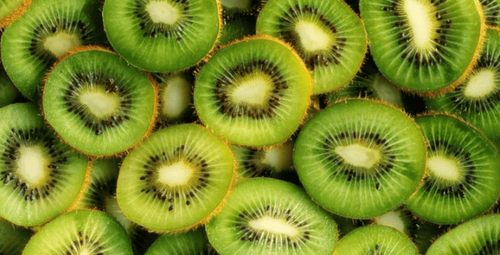
Kiwi có một nguồn chất xơ dồi dào
13. Cantaloupe
In a test on 372 cantaloupe, more than 60% of the pesticide residues were not detected. Because cantaloupe often has a fairly thick skin that forms a protective film against pesticides. However, harmful bacteria can still get into the flesh through the contaminated skin while you chop the melon. The skin of the melon is like a net, and the low acid content creates a favorable environment for bacteria.
To help remove bacteria and pesticides left in melons, you should use a clean brush to scrub the melon with water before adding it. In addition, you should also store cantaloupe in the refrigerator to reduce the risk of food poisoning.
Generally, one cup (177 grams) of cantaloupe provides about 100% of the RDI for both vitamin A (beta-carotene) and vitamin C.
14. Cauliflower
Approximately 50% of cauliflowers tested were free of residual pesticides. In these cauliflower samples, up to 30% were contaminated with imidacloprid, an insecticide that can reduce the numbers of wild bees and honey bees, affecting pollination of food crops. Therefore, organic cauliflower is a smart and environmentally friendly choice.

Súp lơ là thực phẩm thân thiện với môi trường.
15. Broccoli
About 70% of the 712 broccoli samples were free of residual pesticides, and of those only 18% had more than one pesticide.
Broccoli is less susceptible to pests because they can secrete plant compounds called glucosinolates that help fight harmful insects. In addition, broccoli also contains high levels of anti-cancer and anti-inflammatory substances, and provides an abundant amount of vitamins C and K for the body.
Vinmec International General Hospital with a system of modern facilities, medical equipment and a team of experts and doctors with many years of experience in medical examination and treatment, patients can rest assured to visit. examination and treatment at the Hospital.
Please dial HOTLINE for more information or register for an appointment HERE. Download MyVinmec app to make appointments faster and to manage your bookings easily.
Reference source: healthline.comSEE MORE
How to keep food safe and hygienic 10 things to do to avoid poisoning How to store food scientifically and safely




